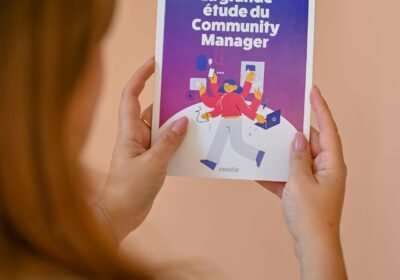Exploring Vatican City’s Evolving Lifestyle: Tradition Meets Modernity
The Intersection of Tradition and Modernity
The Vatican City, a symbol of religious authority and cultural heritage, is experiencing an intriguing intersection of tradition and modernity. As one of the smallest independent states in the world, it not only serves as the spiritual home for Catholics globally but also embodies a lifestyle that is increasingly influenced by contemporary trends. The recent surge in technology and innovative practices permeates daily life within this historic enclave, blending the deep-seated traditions with modern advancements.
At the heart of Vatican City’s lifestyle is its commitment to religious rituals that have defined the community for centuries. Events such as the Papal audiences, the famous Easter celebrations, and the fascinating traditions surrounding the conclave showcase the city’s reverence for its heritage. However, alongside these time-honored practices, there is an ongoing integration of modern technologies that reshape how both locals and visitors engage with these traditions. For instance, Vatican City now utilizes digital platforms to create accessible religious resources and enhance the visitor experience within its cherished sites.
The architectural landscapes, dominated by ancient basilicas and medieval structures, now coexist with modern amenities and services that cater to a dynamic populace, including pilgrims, tourists, and the residents. Cultural events organized within Vatican City frequently blend traditional art forms with contemporary expressions, such as exhibitions that juxtapose classic works with avant-garde installations. Such initiatives highlight the city’s adaptability, making it a vibrant space where history is preserved while simultaneously being reinterpreted.
This unique lifestyle landscape reflects a broader narrative characterizing not only Vatican City but many urban centers worldwide, where past and present converge. As the Vatican continues to evolve within the 21st century, its ability to honor age-old customs while embracing modernity will define its cultural identity, shaping the experiences of those who inhabit or visit this remarkable city.
Pilgrimages and Tourism: The Lifeblood of the Vatican
Vatican City, a unique microstate nestled within the city of Rome, serves as a pivotal hub for religious pilgrimages and international tourism. The influx of millions of visitors each year contributes significantly to the evolving lifestyle of this remarkable enclave. It is this interplay between traditional religious practices and modern tourism that shapes the cultural landscape of Vatican City.
The Vatican stands as the spiritual epicenter of the Roman Catholic Church, and it attracts pilgrims from all corners of the globe. These devoted individuals travel to partake in religious ceremonies, explore the Vatican’s vast artistic heritage, and seek spiritual rejuvenation in the presence of papal events. The papal audience, for instance, draws extensive crowds, thereby fostering a communal atmosphere where faith and shared experience intertwine.
Importantly, the tourism sector dramatically influences Vatican City’s local economy. Hotels, restaurants, and shops catering to tourists benefit from the steady influx of visitors, thereby reinforcing the cultural identity while nurturing local businesses. Monthly events, such as the Vatican Museums Night, also showcase how tourism can blend with cultural heritage, allowing tourists to experience the Vatican’s treasures in a more intimate setting.
The interaction between pilgrims and tourists can also result in a rich tapestry of cultural exchange. Locals have the chance to engage with diverse cultures and traditions brought by visitors, allowing for a broader understanding of the global Catholic community. As international tourism continues to expand, the lifestyles within Vatican City shift in response to the varied demands and interests of its visitors, ensuring that the age-old traditions of faith remain vibrantly interwoven with the pulse of modern life.
In summary, the influence of religious pilgrimages and international tourism is palpable within Vatican City, reflecting a dynamic lifestyle that honors tradition while welcoming modernity. This unique resilience allows the Vatican to remain a beacon of faith and culture amidst an ever-changing world.
Culinary Delights: A Taste of Vatican Culture
The culinary scene in Vatican City is a fascinating reflection of its rich history and the complex interplay between tradition and modernity. One cannot visit this iconic enclave without savoring its diverse array of traditional dishes, many of which have their roots in the Italian culinary heritage. Dishes such as cacio e pepe, a simple yet flavorful pasta made with cheese and pepper, exemplify the authentic Roman flavors that dominate local cuisine.
Italian cuisine is celebrated within this small city-state, and the influences are significant in community and religious celebrations. For instance, festive meals during Easter and Christmas often feature elaborate dishes that bring together family and friends, highlighting the importance of food in fostering community bonds. Additionally, many local restaurants have emerging modern interpretations of these traditional recipes, employing fresh, locally-sourced ingredients while ensuring that the essence of Vatican culture remains intact. This blending of historical flavors with innovative culinary techniques makes dining here a rich experience for both locals and tourists.
As Vatican City continues to evolve, so does its gastronomic landscape. The emergence of modern cafes and gourmet restaurants showcases a trend towards international flavors and healthier dining options, appealing to the diverse palates of visitors. Furthermore, food markets offering organic produce and artisanal products are gaining traction, underscoring a shift towards sustainability and conscious eating within the lifestyle of the city. Consequently, the culinary delights of Vatican City encapsulate not only the traditional tastes of the region but also the growing influence of modern gastronomy, creating a vibrant food culture that appeals to everyone.
Ultimately, the culinary experience in Vatican City embodies a unique intersection of time-honored traditions and contemporary influences, making each meal a celebration of its distinctive lifestyle.
Art and Architecture: Living Heritage
Vatican City, known for its unparalleled blend of artistic heritage and religious significance, offers a unique lifestyle that is deeply entwined with its historic art and architecture. The iconic St. Peter’s Basilica, with its Baroque grandeur, stands as a symbol of the City-State, attracting millions of visitors who come to admire its towering dome, richly decorated interiors, and the famous Pietà by Michelangelo. This architectural masterpiece not only serves as a spiritual center for Catholics around the world but also shapes the lifestyle and identity of the residents in Vatican City.
The Sistine Chapel, another architectural gem, features the extraordinary frescoes of Michelangelo, depicting scenes from the Book of Genesis, including the renowned Creation of Adam. This work of art is not only a highlight of the visiting experience but also influences local culture by fostering a sense of pride among residents. Moreover, the Vatican Museums provide a platform for contemporary artists to showcase their work, bridging the gap between centuries-old heritage and modern artistic expression. These exhibitions challenge the community’s understanding of lifestyle while encouraging dialogue about the evolution of art.
The integration of modern art within Vatican City’s historic backdrop demonstrates a dynamic coexistence—where tradition meets modernity. Street art, performance, and contemporary galleries are increasingly finding their place alongside time-honored tradition, enriching the Vatican’s cultural landscape. This blend not only enhances the experiences of visitors but also influences how residents perceive their own lifestyle in this unique environment. While Vatican City remains steeped in tradition, the influx of contemporary ideas contributes to a vibrant lifestyle that honors the past while embracing the future.









